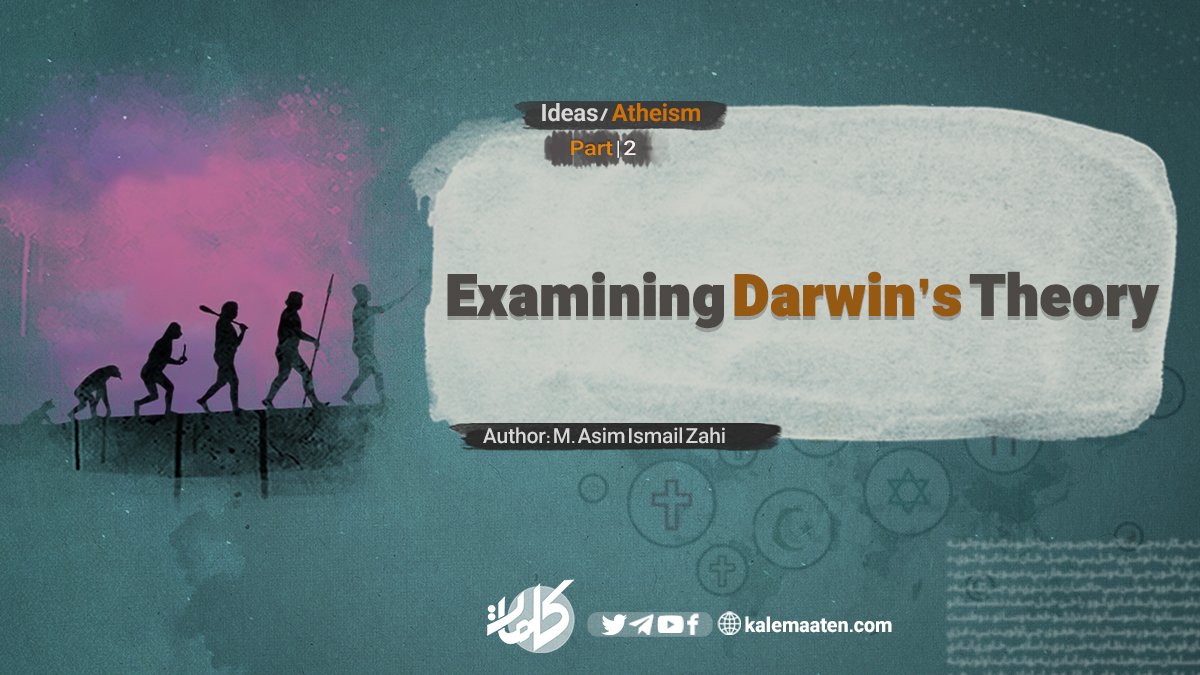
Author: M. Asim Ismail Zahi
Examining Darwin’s Theory (Part Two)
Darwin and the Theory of Evolution
Charles Robert Darwin (February 12, 1809 – April 19, 1882) was an English scientist and biologist best known as the founder of the theory of evolution. He authored the book On the Origin of Species. The theory of evolution, first introduced by Darwin in this work, proposes that living organisms evolved from simple forms, such as bacteria, to more complex forms, including humans. This transformation and evolution are said to have occurred by chance, with the first molecule emerging from the collision of atoms in a primordial mixture. This process eventually led to the emergence of living organisms, which gradually evolved from one species to another. The final and most advanced stage of this evolution is modern humans, who are believed to have descended from ape-like creatures and human-like apes.
Theories of Evolution and the Fixity of Species
Regarding the creation of humans, there are two major theories among scholars:
1. The Theory of Fixity of Species:
Some scholars believe that living beings were created as distinct species. According to this view, humans are an independent species, originally created from soil. This belief aligns with the teachings of the Qur’an and is supported by its verses.
2. The Theory of Evolution:
Other scholars lean toward the theory of evolution, asserting that different species emerged through the gradual evolution of an initial form. According to this theory, all species share a common origin, which evolved into various forms over time. Proponents of this theory argue that skeletal remains from millions of years ago suggest that living organisms have transitioned from simpler to more complex forms.
Critique of the Theory
The theory of evolution has not advanced beyond being a hypothesis, and the evidence presented merely supports it as a conjecture without confirming its actual occurrence. Even its proponents have not definitively established it. While many laypeople believe evolution to be a scientific and proven fact, the reality is that, after 150 years, it remains an unproven hypothesis with no solid evidence. On the contrary, many pieces of evidence challenge the validity of evolution.
Insufficiency of Evidence
The influence and impact of the theory of evolution cannot be underestimated; it has fundamentally altered human thought about the world and their existence. However, even after 150 years, the theory remains at the level of a hypothesis. Upon scrutinizing the evidence and arguments supporting it, it becomes apparent how insufficient and inconclusive they are.
Examination and Critique of Darwin’s Theory
It is essential to analyze and critique this theory from various perspectives:
A. From the Perspective of the Qur’an
The Qur’an, as a divine miracle and the word of Allah (s.w.t), is the ultimate source of all knowledge. This heavenly scripture serves as the constitution and guide for Muslims’ lives, offering the best worldview. Therefore, the Qur’an’s stance is our criterion, providing clear and definitive guidance. As a book of thought, science, and practice, the Qur’an opens the door to all valid and beneficial scientific research.
Nevertheless, we first turn to the Qur’an to hear its clear and decisive message about the creation of humans.
The Material and Earthly Aspect of Humans
The Qur’an explicitly states that the origin of humans lies in soil. From the Qur’anic perspective, the physical aspect of human existence originates from the elements of this earth and is composed of earthly and material substances, such as:
– Turab (soil)
– Teen (clay)
– “«سُلَالَةٍ مِّن طِينٍ» ” (extract of clay)
– Teen laazib (sticky clay)
– “«صَلْصَالٍ مَنْ حَمَإٍ مسنُونٍ»” (dark, stinking mud)
– ” «صَلْصَالٍ كَالْفَخَارِ» ” (baked clay like pottery)
All these terms refer to the material and earthly origin of humans, indicating that they were independently created and have not evolved from other beings. “فَإِذَا سَوَّيْتُهُ:” “Then I fashioned him in due proportion and breathed into him My Spirit, transforming him into a human form with a complete creation.” “وَلَقَدْ خَلَقْنَاكُم ثُمَّ صَوَّرْنَاكُم:” “(Adam, your first ancestor) We created you and then gave you shape.”
Continues…


